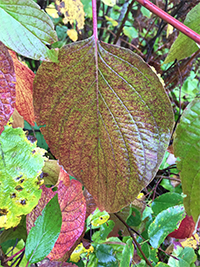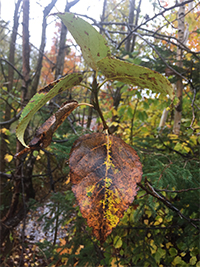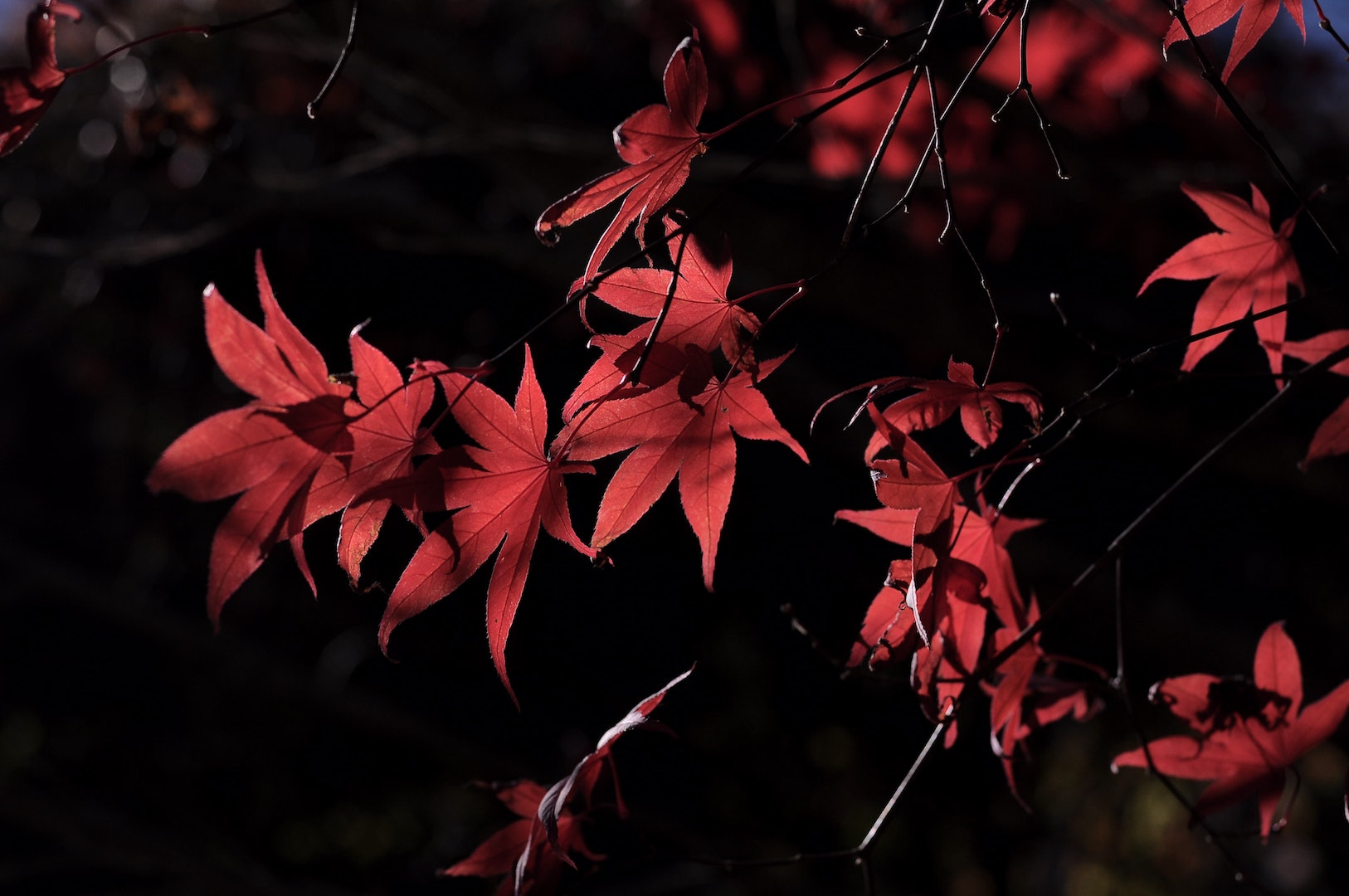By Wolf Ridge Naturalist
The change of colors in autumn never fails to bring a sense of wonder.
People will travel hundreds of miles to witness brilliant oranges, bright yellows, and deep reds. Leaf peepers, a term that I heard just recently, are those that travel to view and photograph fall foliage. So, what is going on “back stage” in order to attract such a huge audience? It all starts with change. As the seasons transition from summer to fall, daylight grows shorter. A layer of corky cells begins to form at the leaves petioles and nutrients are retracted from the leaf blades and stored in branches. With the lack of sunlight, photosynthesis slows, and food production in the leaves declines. Chlorophyll, which gives leaves their green pigment and also plays a role in photosynthesis, starts to break down. The break down of this once abundant pigment allows other pigments such as xanthophylls, carotenoids, and anthocyanins to emerge giving the brilliant yellows, oranges, reds, and purples characteristic of fall.

However, there are other performers on this stage besides Red Maples, Sugar Maples, and Aspens. As I was walking around Wolf Ridge during my phenology class, I became aware of many other plants going through color change such as the Red osier dogwood and Balsam poplar. Although we do not typically associate the color brown with fall, the other pigments that I mentioned will eventually breakdown, allowing tannins to emerge. We are often drawn to performers at center stage, but it is also important to pay attention to those on stage left and right, because they also tell the story of change.


